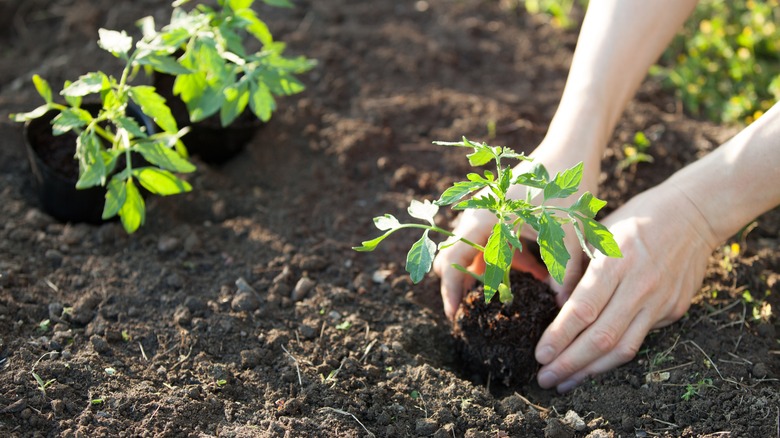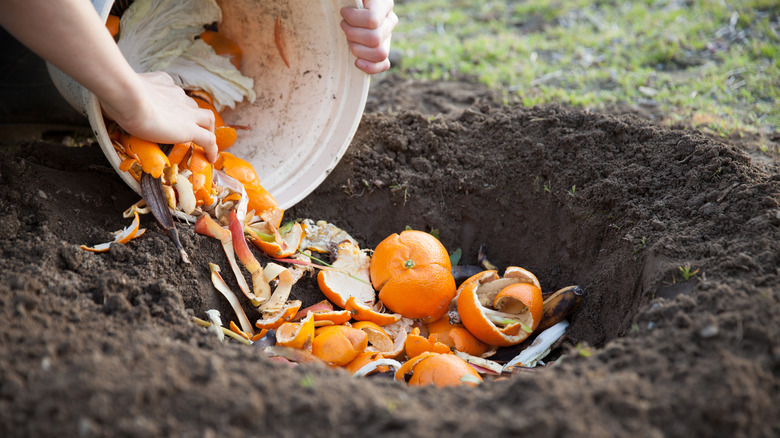Should You Be Using Leftover Citrus Peels In Your Tomato Garden?
There are many myths associated with the use of citrus peels around your home garden: They can be too acidic for your compost pile, don't break down easily, and will kill the beneficial microbes, among others. These doubts might make you wonder if its one of the food scraps that can be used to fertilize your garden, let alone your tomato garden. The answer, however, isn't as simple as a yes or no. Using your leftover citrus peels can indeed be beneficial to your tomato crops when composted or used as a form of fertilizer. However, because of the acidity of citrus peels and their long decomposition process, exercising some care in your application is crucial to ensure the health and safety of your tomato garden.
Tomatoes need a slightly acidic soil, between 6.2 and 6.8 pH, to grow and thrive. Due to their citric acid content, citrus peels have a high acidic value that is significant enough to alter the acidity of your soil, especially when composted. If you have an alkaline soil that is unsuitable for tomato growth, the peels can be used to improve the acidity of your soil. However, If your soil is already acidic or slightly acidic, adding citrus peels would negatively impact the growth of your tomato crops.
Composting citrus peels can be a long process that takes up to six months in favorable conditions. Luckily, there are ways to hasten the process, especially if you live in a hot region. To speed up decomposition, chop the peels into smaller pieces and bury them inside your compost pile. You should then turn the pile once a week to boost oxygen levels.
Citrus peels as a fertilizer and natural pesticide
Tomatoes require a significant amount of nitrogen, phosphorus, and potassium to thrive through the different stages of their development. As citrus peels decompose, especially orange peels, they release a substantial amount of those nutrients into the soil. In addition to that, orange peels contain limonene, a natural compound used in many pesticides to combat ants and aphids, which are some of the most persistent pests in a tomato garden. However, because citrus peels don't easily biodegrade, letting them lie around your tomato garden may attract other pests such as slugs and snails. If you want to use orange peels to keep pests out of your plants and help feed your tomatoes, consider a DIY liquid fertilizer.
For a large batch, soak the peels from roughly 12 oranges in 2 or 3 gallons of water for three days. Strain the water, and irrigate your tomato plants with the resulting mixture. For a smaller amount and to use every bit of the peels, blend the skin of two oranges with a small amount of water for one minute. Then, add 1 teaspoon of water after mixing to ensure that the product is a liquid that can be used for watering your tomato garden. This is especially effective against an insect infestation. These are just a couple of the many DIY tomato fertilizers to help your plants thrive and repurpose your citrus scraps.

